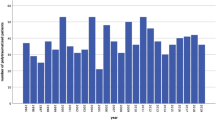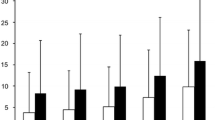Summary
BACKGROUND: Compared to a younger population, the treatment of geriatric trauma victims is known to be associated with a higher mortality and morbidity. The objectives of this study are to assess the clinical course and outcome of multitrauma patients aged 65 years and over. In addition, a direct comparison between the geriatric trauma patients and the younger collective is performed. METHOD: Our study includes all multitrauma patients treated between 1992 and 2001 at a major urban trauma center. The major issues of this analysis are: injury severity, injury pattern, preclinical hemodynamics and intubation rate, operative treatment, ventilation time, outcome as well as incidence of multiorgan failure (MOF) and adult respiratory distress syndrome (ARDS). Out of these results, adults over 65 years of age (group B, n = 45) are compared to the younger group, ranging from 16 to 64 years of age (group A, n = 369). RESULTS: The preclinical intubation rate was comparable in both groups (A, 73.2%, B, 68.9%). Significantly more cases of group B were primarily shocked (A, 29.0%; B, 48.9%). The mean ISS was comparable in both groups (A, 34.0; B, 32.1). The younger group showed a significantly higher incidence of spine injuries (A, 21.1%; B, 6.7%). The number of emergency procedures (A, 24.2%; B, 24.4%) and operations during the first 24 hours (A, 70.2%; B, 60.0%) was comparable in both groups. The older group showed a lower number of reconstructive operations (A, 57.6%; B, 35.6%). Geriatric trauma patients had a longer ventilation time compared to their younger counterparts (A, 13.0 days; B, 20.0 days). During ICU-therapy, the ARDS rate was comparable (A, 16.0%; B, 15.6%). In contrast, the incidence of MOF was significantly higher in group B (A, 7.1%; B, 17.8%). The older group showed a significantly higher mortality rate (A, 26.8%; B, 53.3%) as well as early mortality during the first 24 hours after admission (A, 16.3%; B, 31.11%). CONCLUSION: Despite similarity in injury severity and a comparable injury pattern, elderly multitrauma patients initially presented a higher rate of hemodynamic instability, had to be ventilated longer and had a higher mortality.
Similar content being viewed by others
Author information
Authors and Affiliations
Corresponding author
Rights and permissions
About this article
Cite this article
Aldrian, S., Nau, T., Koenig, F. et al. Geriatric polytrauma. Wien Klin Wochenschr 117, 145–149 (2005). https://doi.org/10.1007/s00508-004-0290-y
Received:
Accepted:
Published:
Issue Date:
DOI: https://doi.org/10.1007/s00508-004-0290-y




